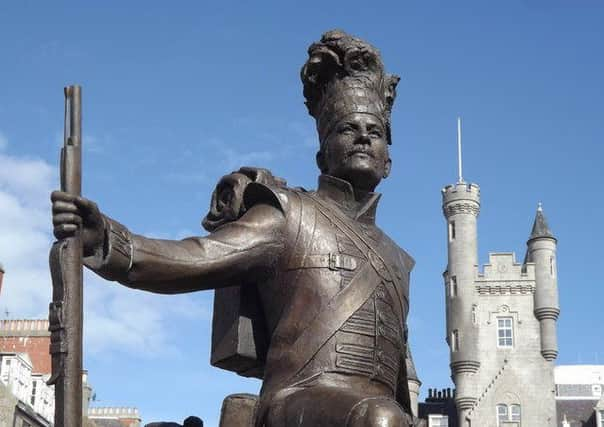First World War Gordon Highlanders exhibit opens


“Shattered Hopes: The Gordon Highlanders in 1914” charts the exploits of both the regular and territorial battalions of the famous north east-based regiment in the opening months of the “war to end all wars” when the Gordon Highlanders were involved in the major battles at Mons, Le Cateau and Ypres and two battalions took part in the Christmas Truce in the winter of 1914.
Highlights of the exhibition include the sword carried by Captain James Brooke, who was posthumously awarded the Victoria Cross after he was killed in action on 29 October, 1914, during the first battle of Ypres.
Advertisement
Hide AdHe was awarded Britain’s highest medal for gallantry for his “conspicuous bravery” in leading two attacks on the German trenches under heavy rifle and machine gun fire, regaining a lost trench and preventing the enemy from breaking through the British line.
His Victoria Cross, one of 19 VCs won by soldiers of the regiment during its 200 year history, is on permanent display in the museum’s main exhibition gallery, the Grant Room.
The exhibition also features a drum of the 2nd Battalion the Gordon Highlanders, abandoned in Ostend in October, 1914, and taken by German soldiers to the War Museum in Berlin in 1918, and the medals of Private Peter Imlah, of the 2nd Gordons - the sole survivor in 1918 of a draft of 200 men who had left for France in 1914.
Jesper Ericsson, the curator of the Gordon Highlanders Museum, said: “This is the exhibition that people have been waiting for. Public interest in the First World War is huge, and the story of the Gordon Highlanders in 1914 is both unique and extremely moving.”
He explained: “Focusing purely on the first few months of the war for the exhibition was a deliberate decision, as the Gordons were among the first to travel to France and Flanders after the outbreak of hostilities in August 1914, and were involved in all the major actions that summer and autumn, culminating at the end of the year in the Christmas Truce.”
Mr Ericsson continued: “The mobile fighting of the first few battles dissolved into stagnant trench warfare that became the mark of the conflict for the years ahead. Any hopes that the war would be over by Christmas were shattered by the grim realities of modern warfare.”
The exhibition, which will run un until 19 November, is the first in a five year programme of special exhibitions, displays and events planned by the museum to mark the First World War.